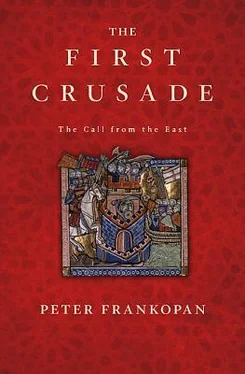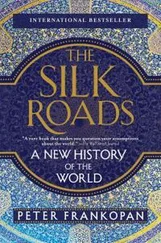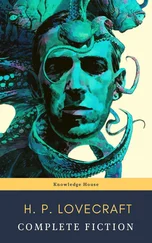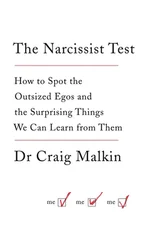Alexios personally oversaw the programme of events. He made sure Abu’l-Kasim was shown the main sites in the capital, singling out highly symbolic monuments such as the statues set up in honour of Roman emperors in celebration of great military victories. The Turk was taken horse racing and shown first-hand the prowess of Byzantium’s finest charioteers, designed to make an impact on a man whose people’s use of the horse was critical to their military success. He went hunting with the emperor and was taken to that most Roman of institutions, the baths. In short, Abu’l-Kasim was being lavishly entertained and assiduously courted. 53
Alexios wanted a concrete agreement about Nicaea and the approach he took was one often used to deal with difficult neighbours: the award of a title and a fat stipend. The aim was to make the enemy recognise, even if only implicitly, the overlordship of the emperor – while buying him off at the same time. Before he returned to Nicaea, therefore, ‘Alexios presented the Turk with more gifts, honoured him with the title of sebastos , confirmed their agreement in greater detail and sent him with every sign of courtesy back over the sea.’ 54The title sebastos was one of the very highest in the empire, which was normally only awarded to members of the ruling family and their closest intimates. Its bestowal on Abu’l-Kasim reveals that Alexios hoped to gain substantially as a result of the agreement reached in the capital. If the emperor’s gamble was successful, it would restore the pivotal location in western Asia Minor to imperial hands, opening up the possibility of a wider recovery of this region. If unsuccessful, Alexios risked serious damage to his reputation for pinning his hopes on a man who had been a thorn in the empire’s side for many years.
Disaster struck as soon as Abu’l-Kasim returned to Nicaea. The emir’s discussions with the emperor did not meet with enthusiasm from other leading figures in the town. When reports started to circulate that Bursuk was again approaching with an even larger force, the governor of Nicaea was rounded on by a group of 200 leading Turks, keen to make a favourable impression on the new sultan. Seizing Abu’l-Kasim, they placed a noose made of bowstring around his neck and strangled him. 55
The murder was a major blow to the emperor. Alexios reacted desperately, making contact with Abu’l-Kasim’s brother, Buldagi, who had taken control of the city, and made him a direct offer. This time, there was no visit to Constantinople, no trips to the races, no awarding of titles, but the heart of the offer was the same. The emperor therefore made his proposal short and bold: he offered to buy Nicaea. 56
Once more, however, things went against Alexios. With the Turks in Nicaea now in disarray, a new figure arrived on the scene. Kilidj Arslan made straight for the city after being released from prison in Baghdad in late 1094 or early 1095. As soon as he reached Nicaea, the Turks ‘ran riot with joy’, and handed control of the town over to him. This was not entirely surprising: he was, after all, the son of the late Sulayman. 57His return to the family power base seems to have been engineered by the new regime of Barkyaruq, which clearly set great faith in him; and in the summer of 1097 he would command the massive army assembled to confront the Crusaders as they crossed Asia Minor. 58His appointment to govern Nicaea on Barkyaruq’s behalf was a shrewd choice, but it scuppered the emperor’s chances of retaking this vital city and therefore stemming the collapse of the eastern provinces.
Byzantium’s hold over its eastern provinces was slipping away fast. Those who reached Asia Minor in 1097 could not believe their eyes or hide the horror at what they saw when they got to Nikomedia: ‘Oh, how many severed heads and bones of the dead lying on the plains did we then find beyond Nicomedia near that sea! In the preceding year, the Turks destroyed those who were ignorant of and new to the use of the arrow. Moved to compassion by this, we shed many tears there.’ 59A sign of how bad conditions were and how limited Byzantine ambitions had become, the road beyond Nikomedia was all but impassable by this time: 3,000 men with axes and swords had to be sent ahead to clear the way and to hack open a route to Nicaea. 60
The lack of progress over Nicaea was mirrored by the string of setbacks on the coast, where Çaka continued to wreak havoc. Although Anna Komnene’s account has persuaded most historians that the threat posed by the Turk had been contained in 1092, in fact the opposite was the case. 61In the mid-1090s, exasperated by the ineffective and incompetent efforts to deal with Çaka, Alexios recalled his brother-in-law, John Doukas, from Dyrrakhion where he had been successfully shoring up the frontier against the Serbs for more than a decade. The earliest he could have been sent against Çaka was 1094. 62This corresponds closely with observations from elsewhere that constant Turkish attacks in this region at that time made even basic travel impossible. 63
A full report of the major expedition sent to oust Çaka and reconquer the coast is provided in the Alexiad , though this is dispersed across several books, giving the impression of multiple campaigns and sustained success. 64In reality, there was one concerted effort to deal with Çaka which was spearheaded by John Doukas, who led Byzantine land forces, and another close relative of the emperor, Constantine Dalassenos, who took charge of the fleet. Operations began in the summer of 1097.
The aim of the expedition was clear. It was essential to secure the coast and to restore imperial authority to this region. The orders given to Doukas were uncompromising: he was to take back the islands that had fallen one after another to the Turks and to recover the towns and fortifications which had been lost. As we shall see, the primary target was Smyrna and its troublesome ruler Çaka. 65In obvious contradiction to Anna Komnene’s account, Çaka was still a major force in 1097. And as one Latin source therefore noted correctly, the entire maritime region of Asia Minor was under Turkish control when the Crusaders arrived there a few years later. 66Nicaea remained elusive; and efforts against the coastal region had come to nothing. The situation facing Byzantium in the mid-1090s was not so much desperate as catastrophic.
5
On the Brink of Disaster
The deteriorating situation in Asia Minor was not the only problem Alexios Komnenos had to contend with. On the eve of the First Crusade, Constantinople itself imploded. The failure to make any progress against the Turks led to serious concerns about the emperor’s judgement and his abilities. As further threats emerged, in the form of renewed nomad attacks deep into the Balkans and Serbian raids on the north-western frontier, Alexios’ rule was in jeopardy. The situation became critical shortly before envoys were sent to the Pope in 1095, when the emperor was faced with a coup that was supported by almost the entire Byzantine elite: senior officers, senators, aristocrats and some of Alexios’ closest intimates rose up against him, including many who had helped propel him to power. The spiral of disintegration that would lead Alexios to seek help from the west continued.
Pressure began to mount on the emperor in Constantinople as soon as the situation in Asia Minor began to worsen. After the first wave of Turkish successes in 1090–1, Alexios was already being roundly criticised in the capital. To John the Oxite, the patriarch of Antioch, the emperor had become a liability; endless wars in the 1080s had achieved nothing and military setbacks had brought great suffering. 1And the patriarch’s admonition fell on fertile ground. Dissatisfaction was widespread amongst those who were not part of the golden circle that Alexios had set up around him at the start of his reign. He was assiduous, reported one Byzantine commentator, in promoting members of his family, lavishing vast amounts of money on them: ‘When it came to his relations or some of those who served him, [Alexios] distributed public funds by the cartload. They received fat yearly donations, and enjoyed such wealth that they could have at their service a retinue which was not appropriate to a private person but to emperors; they could have houses the size of cities, not distinct in their splendour from palaces.’ The rest of the aristocracy, the author remarked sadly, was shown no such generosity. 2
Читать дальше











